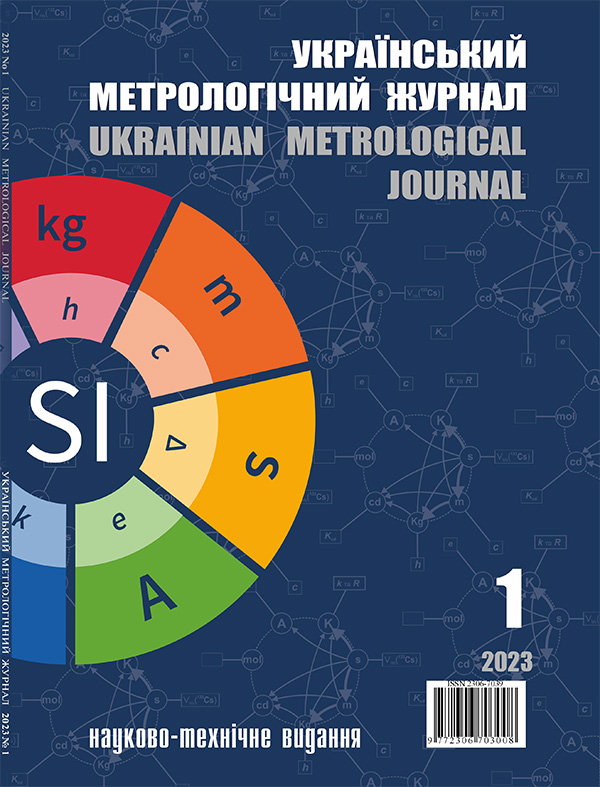Математичні основи калібрування дисторсії в цифрових камерах
DOI:
https://doi.org/10.24027/2306-7039.1.2023.282602Ключові слова:
калібрування; дисторсія; похибка дисторсії; камера; спотворенняАнотація
Станом на сьогодні більшість процесів автоматизовані людиною за допомогою комп’ютеризації. Не оминув цей процес і автомобільну галузь. Останні доробки в цій галузі дають надію, що в недалекому майбутньому автомобілі будуть повністю автономними. Але перед цим потрібно вирішити ряд наявних проблем, такі як збільшення кута поля зору для більшого охоплення дороги при мінімальному викривленні простору. Адже відомо, що при збільшенні кута поля зору збільшується дисторсія (невідповідність геометричної подоби між об’єктом та його зображенням). Ця невідповідність значно знижує точність роботи алгоритмів розпізнавання. Для вирішення вказаної проблеми ця робота пропонує метод калібрування камери. Розглянуто математичні аспекти дисторсії та методу калібрування автомобільних камер, похибки калібрування. Запропоновано метод статичного калібрування без використання точок на нескінченності, за допомогою статичних шаблонів.
Посилання
Final report of the eSafety Working Group on Road Safety. European Commission, Directorate-General for the Information Society and Media, 2002.
Bellino M. et al. Calibration of an embedded camera for driver-assistant systems. Intelligent Transportation Systems: Proceedings of the Conference. IEEE, 2005, pp. 354−359. doi: https://doi.org/10.1109/ITSC.2005.1520074
Bellino M. et al. Lane detection algorithm for an onboard camera. Photonics in the Automobile: Proceedings of SPIE, 2005, vol. 5663, pp. 102−111. https://doi.org/10.1117/12.596866
Abdel-Aziz Y.I., Karara H.M. Direct Linear Transformation from Comparator to Object Space Coordinates in Close-Range Photogramme. Photogrammetric Engineering & Remote Sensing, 2015, vol. 81, no. 2, pp. 103−107. doi: https://doi.org/10.14358/PERS.81.2.103
Fischler M.A., Bolles R.C. Random sample consensus: a paradigm for model fitting with applications to image analysis and automated cartography. Communications of the ACM, 1981, vol. 24, no. 6, pp. 381−395. https://doi.org/10.1145/358669.358692
Luong Q.-T., Faugeras O.D. Self-Calibration of a Moving Camera from Point Correspondences and Fundamental Matrices. International Journal of Computer Vision, 1997, vol. 22, pp. 261−289.
Martins H.A., Birk J.R., Kelley R.B. Camera models based on data from two calibration planes. Computer Graphics and Image Processing, 1981, vol. 17, issue 2, pp. 173−180. doi: https://doi.org/10.1016/0146-664x(81)90024-1
Faig W. Calibration of Close-Range Photogrammetric Systems: Mathematical Formulation. Photogrammetric Engineering and Remote Sensing, 1975, vol. 41, no. 12, pp. 1479−1486.
Sutherland I.E. Three-Dimensional Data Input by Tablet. Proceedings of the IEEE, 1974, vol. 62, no. 4, pp. 453−461.
Hartley R., Zisserman A. Multiple View Geometry in Computer Vision. Second edition. Cambridge university press, 2003.
Tsai R. A versatile camera calibration technique for high-accuracy 3D machine vision metrology using off-the-shelf TV cameras and lenses. IEEE Journal on Robotics and Automation, 1987, vol. 3, issue 4, pp. 323−344. doi: https://doi.org/10.1109/JRA.1987.1087109
Coxeter H.S.M. Projective Geometry. Springer Science & Business Media, 2003. 162 p.
Shimizu I. et al. Head pose determination from one image using a generic model. Automatic Face and Gesture Recognition: Proceedings of the Third IEEE International Conference. IEEE, 1998, pp. 100−105. doi: https://doi.org/10.1109/AFGR.1998.670932
Foursa M. Real-time infrared tracking system for virtual environments. Proceedings of the 2004 ACM SIGGRAPH International Conference on Virtual Reality continuum and its applications in industry. New York, 2004, pp. 427−430.
Sturm P.F., Maybank S.J. On plane-based camera calibration: A general algorithm, singularities, applications. Proceedings of 1999 IEEE Computer Society Conference on Computer Vision and Pattern Recognition (Cat. No PR00149). IEEE, 1999, vol. 1, pp. 432−437. doi: https://doi.org/10.1109/CVPR.1999.786974
Pan X. et al. Spatial as Deep: Spatial CNN for Traffic Scene Understanding. Proceedings of the Thirty-Second AAAI Conference on Artificial Intelligence, 2018, vol. 32, no. 1. https://doi.org/10.1609/aaai.v32i1.12301
Philion J. FastDraw: Addressing the Long Tail of Lane Detection by Adapting a Sequential Prediction Network. Proceedings of the IEEE/CVF Conference on Computer Vision and Pattern Recognition, 2019, pp. 11582−11591.
Qu Z. et al. Focus on Local: Detecting Lane Marker from Bottom Up via Key Point. Proceedings of the IEEE/CVF Conference on Computer Vision and Pattern Recognition, 2021, pp. 14122−14130.
Abualsaud H. et al. LaneAF: Robust Multi-Lane Detection with Affinity Fields. IEEE Robotics and Automation Letters, 2021, vol. 6, no. 4, pp. 7477−7484. doi: https://doi.org/10.1109/LRA.2021.3098066
Ge Z. et al. YOLOX: Exceeding YOLO Series in 2021. https://doi.org/10.48550/arXiv.2107.08430
##submission.downloads##
Опубліковано
Номер
Розділ
Ліцензія
ПОЛІТИКА, ЯКА РЕКОМЕНДУЄТЬСЯ ЖУРНАЛАМ, ЩО ПРОПОНУЮТЬ ВІДКРИТИЙ ДОСТУП З ЗАТРИМКОЮ
Автори, які публікуються у цьому журналі, погоджуються з наступними умовами:
Автори залишають за собою право на авторство своєї роботи та передають журналу право першої публікації цієї роботи, яка через 12 місяців з дати публікації автоматично стає доступною на умовах ліцензії Creative Commons Attribution License, котра дозволяє іншим особам вільно розповсюджувати опубліковану роботу з обов'язковим посиланням на авторів оригінальної роботи та першу публікацію роботи у цьому журналі.
Автори мають право укладати самостійні додаткові угоди щодо неексклюзивного розповсюдження роботи у тому вигляді, в якому вона була опублікована цим журналом (наприклад, розміщувати роботу в електронному сховищі установи або публікувати у складі монографії), за умови збереження посилання на першу публікацію роботи у цьому журналі.

